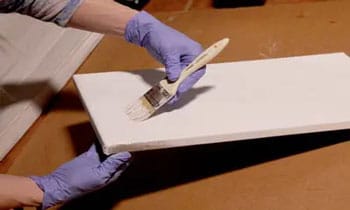
If you are a beginner, you have probably heard about gesso, but you don’t have a clear idea of what it is and how to get the most out of it. Here, we’re going to fix that.
Learning how to gesso a canvas is the most important thing any aspiring artist should learn from the get-go. If you never got around to learning it, we’ll be helping you how to properly apply gesso and why it is a critical art supply for any canvas.
So, make sure to follow along and take your time to process all the information detailed down below!
What Is Gesso?
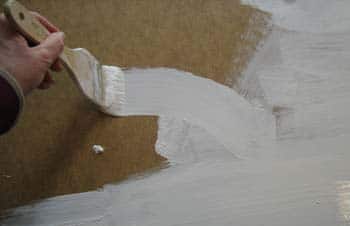
Although you might have heard about it before, and you vaguely know about it, gesso is used to prime the surface for your canvas.
It creates a barrier around the canvas, so it has a harder time trying to soak into it. This is a nice feature to have since this could severely ruin your artwork in the long run.
Why Gesso a Canvas?
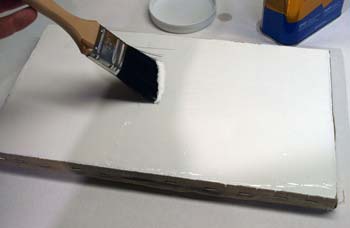
Many people seem to overlook the benefits of adding Gesso to your canvas. While some artists do fine without using Gesso, it always comes in handy to have a protective layer.
Here are some reasons why you should gesso your canvas:
- Gesso is a must if you want to get a protective layer for painting.
- Helps your paint have a thicker look when you apply it.
- You also have a lot more control over your strokes using Gesso.
- Gesso makes your canvas look more white.
- It’s also quite cheap, and it does not hurt to have it around when you need it.
You don’t have to gesso a canvas if you don’t want to. As we said before, some people do fine without it.
But if you Gesso a canvas, you will notice how easy it is to paint with it on top of the surface.
And, it does not take much time to gesso a canvas. It’s worth the trade-off at the end of the day.
Gesso a Canvas: Steps by Step Guideline
It’s not like you can print the next Mona Lisa on untreated canvas. If you want to see stunning results, you must gesso your canvas beforehand.
Applying gesso on a canvas does not take much time either. So, it is definitely an excellent trade-off for your next masterpiece.
So, here is how to easily gesso your canvas in just a few minutes:
1. What You’ll Need

Luckily for us, you don’t need many materials to gesso your canvas. If you are an artist, you probably already have all of these materials, so no need to worry!
Here is what we will be using throughout the rest of the tutorial:
- Gesso
- Water
- Any container that you can fill up with water
- Any cloth you don’t mind sacrificing
- Sandpaper
- Paintbrush
Already gathered all these items? Then you can start with the steps below:
2. Protect the Workspace
It would be quite frustrating to see a massive mess after you are done using gesso. To prevent that horrible thought from ever making its way into reality, you must cover your workspace.
Cleaning gesso is quite troublesome, and it takes quite a lot of effort, so make sure to adequately cover any area you will be working on.
It is relatively easy to spill gesso all over your workspace, so take the time needed to protect your area!
3. Mix It Up
Here comes the fun part. We just want to create a solution to apply on the canvas.
Gesso is quite thick, to say the least. So, you want to mix it with water before you attempt to do anything with it. Otherwise, you will most likely end up with some weird results.
You want to get your container and fill it up with water. From there, you just need to add some gesso.
We strongly recommend reading the back of gesso if you want to know how much gesso you need, or if you need to do something else.
But for the most part, these steps should be more than enough for you to get it done.
4. Stir It Up
Now that you have mixed both water and gesso, you have to stir them up. But you want to give it a good stir so both substances can mix thoroughly and smoothly.
You will know when it is ready as soon as you notice it has the same consistency as thick ice cream. Take as much time as needed until you get a perfect texture.
5. Sand the Canvas
The purpose behind this is to get the canvas in shape. So, to accomplish that goal, you have to sand the surface to get rid of imperfections.
Keep doing this until you get that sweet and consistent, even surface.
6. Wet the Paintbrush
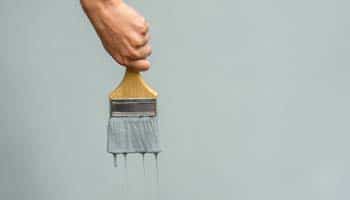
Now you just want to wet your paintbrush. Make sure to squeeze out excess water, so it doesn’t end up dripping all over your floor.
If you don’t squeeze out the water, it will end up soaking up your gesso, so make sure to get it done.
7. Drop the Gesso
Drop some gesso on top of the canvas. Grab your paintbrush and begin to apply it evenly. You must do this until you have fully covered the area.
As a rule of thumb, apply the gesso evenly and thinly distributed. Alternatively, you could use a squeegee. Some people like to use it when applying gesso.
It is totally up to you; they both get the job done and work just fine.
8. Cover the Edges
Don’t forget to give the edges some love too! You might notice that the sides will start dripping as soon as you apply your first coat. To prevent this from happening, use a smaller paintbrush.
So, when you apply the coat using your smaller paintbrush, work the excess gesso back into the canvas.
9. Wash the Paintbrush
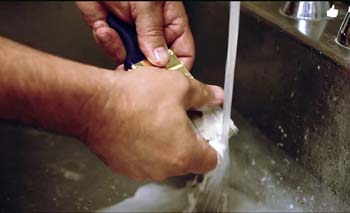
Once you have applied the first coat, wash your paintbrush thoroughly. The best way to do so is to run water on it and squeeze out all the leftovers using your hands.
You want to do this as soon as you are done applying the coat. Otherwise, the gesso will dry up and damage your paintbrush.
10. Let the Canvas Dry
Now that you have successfully applied the coat allow the canvas to dry for at least an hour.
Depending on how much you used, this process could take some time. But for the most part, it takes roughly one hour.
11. Dust-Off the Grit
Once the canvas has thoroughly dried, you want to sand the canvas again to create an even out surface. You also have to dust off any frit.
This will essentially allow us to get better results when we begin to paint our beautiful masterpiece on the canvas.
12. Add A Second Layer
To make your surface even smoother, you can apply another coat just like you did before. However, two layers are more than enough. If you find that your surface is not as smooth as you would like it to be, then feel free to add as many coats as needed!
13. Let the Canvas Dry
And now, the final step is to simply let the canvas dry, but this time you need to let it dry overnight. Now the fun can begin!
Frequently Asked Questions
These questions down below were not covered throughout the article. If you still have any questions, you might find them down below.
Do you need to use gesso on canvas?
You are not meant to use it every single time you want to use your canvas. However, the extra perks you get from using gesso on canvas are worth the spare time.
And with gesso, you don’t need to worry about the paint soaking into the canvas.
What can I use instead of gesso on canvas?
The closest thing to gesso is white acrylic paint. The gesso is way thicker than white acrylic paint, but despite that, it works just like gesso.
You are not meant to use it every single time you want to use your canvas. However, the extra perks you get from using gesso on canvas are worth the spare time. This acrylic paint post has some additional tips to dry acrylic paint easily.
Can you add color to gesso?
Yes, you can paint gesso. It is totally up to you whether you want to add it or not. If you add color, you will get a tinted gesso.
How do you thin out gesso?
Gesso is generally thick, so the best way to thin it out is to add water to it. Use a container and fill it up with water. After that, add some gesso and stir it up.
Should you sand your canvas?
The idea behind sanding your canvas is to make the surface smoother. So, when you apply gesso to your canvas, always sand it after it has thoroughly dried out.
Conclusion
The process is quite simple and overall straightforward. Although the process does not take much time, we highly recommend doing this a few hours before you begin painting on the canvas.
But overall, learning how to gesso a canvas is quite easy, and you only need to keep in mind the drying times. It takes a while before you can paint on the canvas. That’s the only major drawback of doing this.
And now that you know how to properly apply gesso, you can see just how powerful it is.
Also Read: